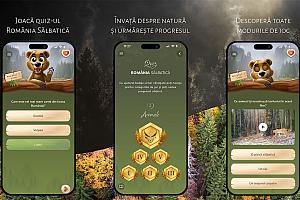Romanian IT company launches AR app for Iași Palace of Culture

Centric IT Solutions Romania, in partnership with the Ethnographic Museum of Moldova, BCR, and the Association “All for One,” recently launched MuzeAR, an interactive application that uses Extended Reality, or XR, to bring the Iași Palace of Culture to life.
The application uses AR technology to present heritage items. As visitors explore the museum exhibits, they can discover long-forgotten uses and gain a new understanding of local history and culture.
By providing an interactive and personalized experience through the MuzeAR application, the technology generates increased visitor engagement, exceeding the traditional limits of museum visits, the company said.
Extended Reality (XR) is the umbrella term used to describe technologies that combine elements from virtual reality (VR), augmented reality (AR), and mixed reality (MR) to provide users with an integrated and immersive experience. Augmented Reality (AR) adds virtual or digital elements to the existing physical environment. These elements can be viewed through a mobile device, such as a smartphone or tablet, which uses cameras and sensors to detect and display the AR elements in the context of the user's physical environment.
Additionally, AR attracts young people and enhances the learning process by offering interactive and engaging experiences for visitors. Along the exhibition route, with the help of a phone, the public can discover the utility and usage of three large-sized peasant artifacts in the museum's collection.
“MuzeAR is an application that recreates historical and cultural practices that have been lost or are difficult to render, using AR technology. In the technical process of creating the MuzeAR application, the Centric team started with creating a storyboard for the 3D scanning visual sequences. Then, the real objects were 3D scanned, defining reference points in the virtual space for correct alignment of objects to the real environment, and three-dimensional digital models of the objects were created using specialized software. Finally, in the character animation process, Kinect devices were used. Kinect devices are used to capture the movements and gestures of users, while other equipment, such as 3D scanning cameras and modeling and animation software, is used to capture and process the data necessary for creating and animating objects and characters in the virtual environment,” said Florin Zaharia, Discipline Coordinator XR Team, Centric IT Solutions Romania.
MuzeAR is available for Android and iOS devices.
It is not the only XR application developed by Centric in Romania; another example is the participatory urban design project Furban, applied in Florești, Cluj, and Bucharest's District 2. In 2020, the company also created the Virtual Therapist, an application that can be used in therapy for children with autism, which was donated to the Blue Smile Foundation.
(Photo source: the company)













